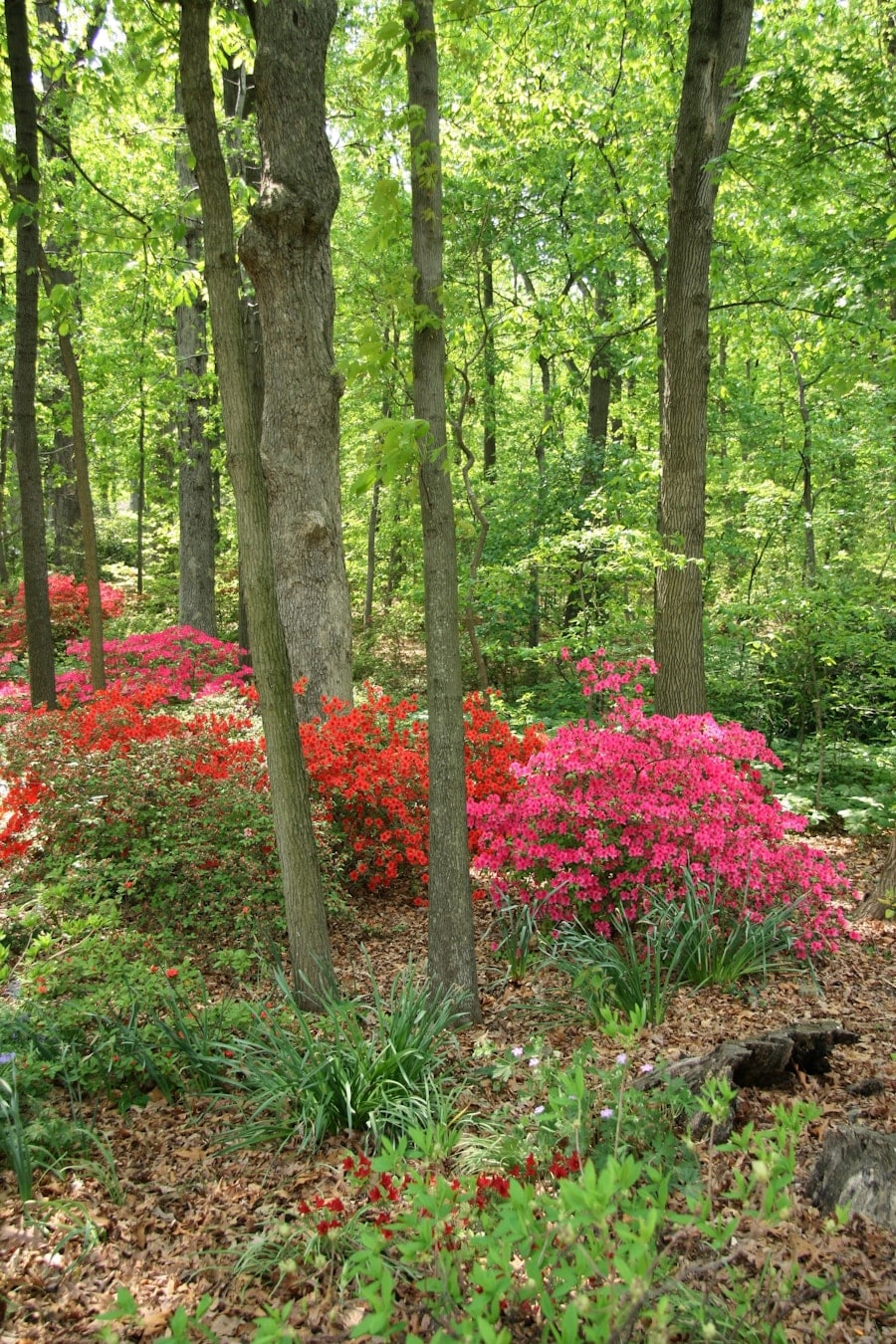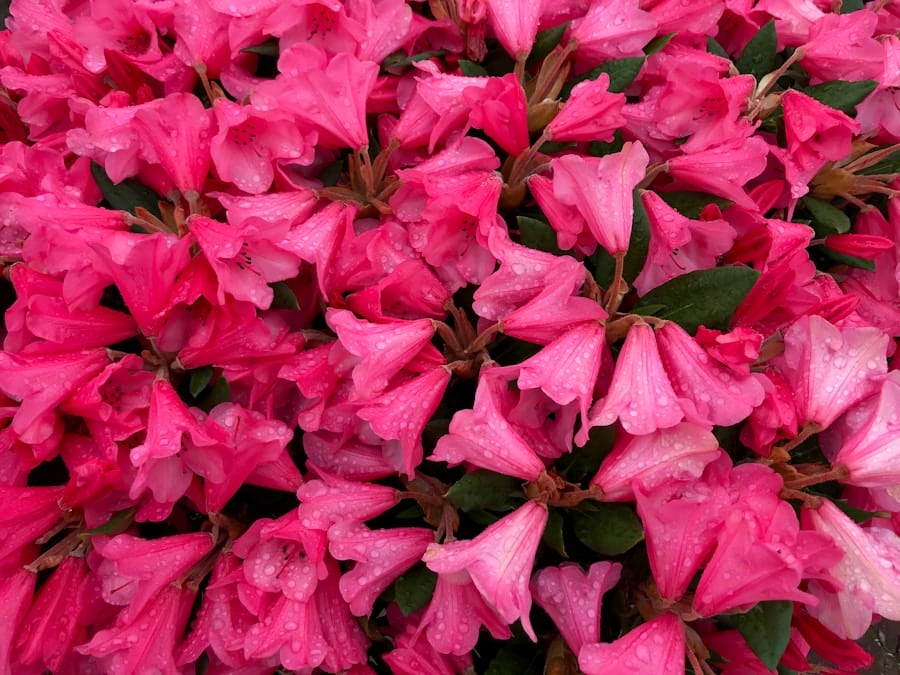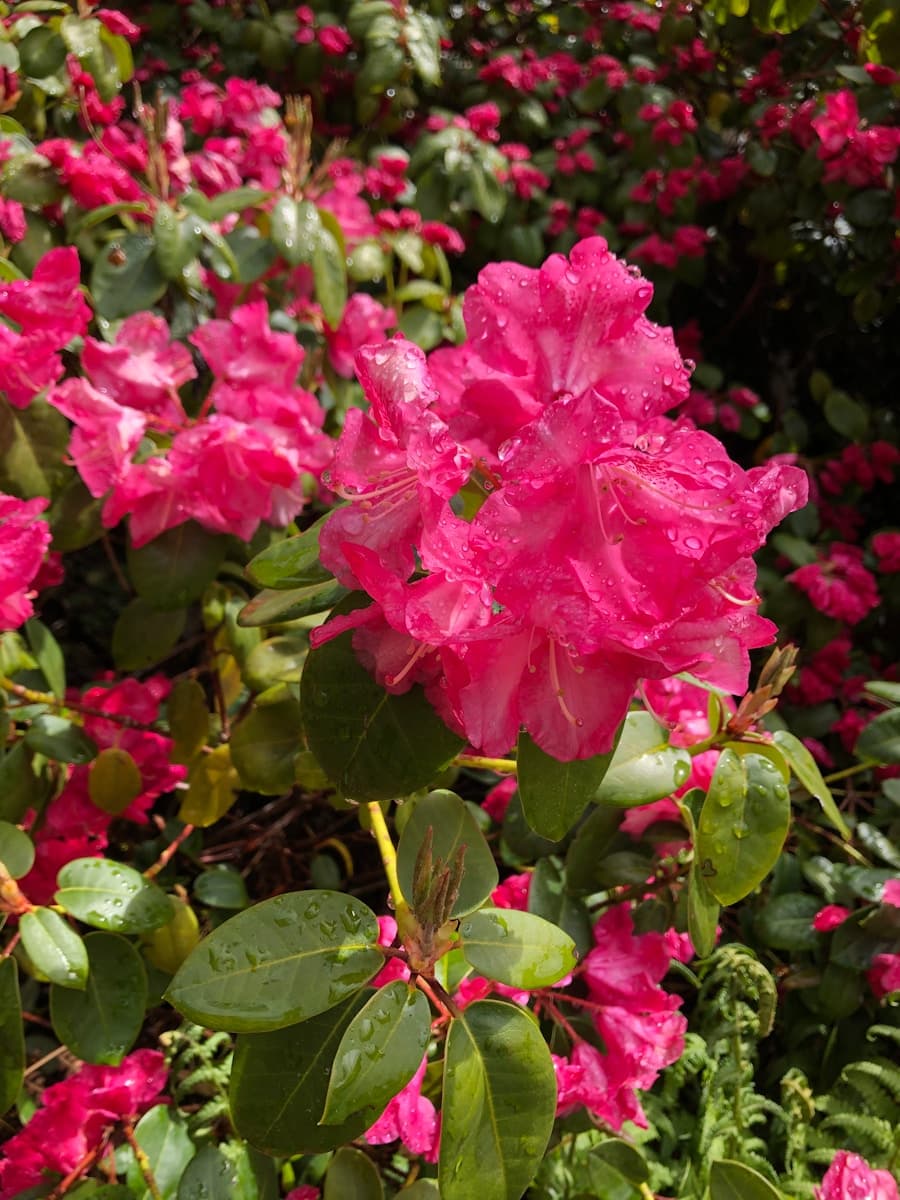Azaleas and rhododendrons, both members of the Ericaceae family, are renowned for their stunning blooms and lush foliage. However, to thrive, these plants require a specific set of nutrients that cater to their unique biological needs.
Nitrogen is crucial for leaf development and overall plant vigor, while phosphorus plays a vital role in root establishment and flowering. Potassium, on the other hand, is integral for water regulation and disease resistance. In addition to these macronutrients, azaleas and rhododendrons also benefit from micronutrients such as iron, magnesium, and manganese.
Iron is particularly important for preventing chlorosis, a condition where leaves turn yellow due to insufficient chlorophyll production. Magnesium aids in photosynthesis and overall plant health, while manganese contributes to enzyme function and metabolic processes. The ideal soil pH for these plants typically ranges from 4.5 to 6.0, which is slightly acidic.
This pH range enhances nutrient availability, ensuring that the plants can absorb the necessary elements for optimal growth. Check out the latest fertilizers for your garden at Soil Compost.
Key Takeaways
- Azaleas and rhododendrons require acidic soil with a pH between 4.5 and 6.0
- Organic fertilizers such as compost, manure, and fish emulsion are ideal for azaleas and rhododendrons
- Chemical fertilizers with a balanced N-P-K ratio can be used sparingly for azaleas and rhododendrons
- Slow-release fertilizers provide a steady supply of nutrients over an extended period of time
- Liquid fertilizers can be applied directly to the soil or foliage of azaleas and rhododendrons for quick absorption
Organic Fertilizers for Azaleas and Rhododendrons
Compost: A Nutrient-Rich Soil Amendment
Compost is an excellent organic fertilizer that not only enriches the soil with essential nutrients but also improves soil structure and moisture retention. When applied around the base of azaleas and rhododendrons, compost can enhance microbial activity in the soil, promoting a healthy ecosystem that supports root development.
Other Organic Options for Azaleas and Rhododendrons
Fish emulsion is another excellent organic option that is rich in nitrogen and trace minerals. This liquid fertilizer can be diluted with water and applied during the growing season to provide a quick nutrient boost. Additionally, products like bone meal can be beneficial due to their high phosphorus content, promoting robust root systems and vibrant blooms.
The Benefits of Organic Fertilizers for Azaleas and Rhododendrons
Organic fertilizers tend to release nutrients gradually, reducing the risk of nutrient leaching and ensuring that azaleas and rhododendrons receive a steady supply of nourishment over time. This makes them an ideal choice for gardeners who want to promote healthy plant growth while minimizing their environmental impact.
Chemical Fertilizers for Azaleas and Rhododendrons

Chemical fertilizers, often referred to as synthetic fertilizers, are manufactured to provide specific nutrient ratios tailored to the needs of various plants. For azaleas and rhododendrons, formulations with a balanced N-P-K ratio such as 10-10-10 or 20-20-20 can be effective in promoting healthy growth and flowering. These fertilizers are designed for quick absorption by plant roots, making them an excellent choice for gardeners seeking immediate results.
However, it is crucial to apply chemical fertilizers judiciously. Over-fertilization can lead to salt buildup in the soil, which can harm the delicate root systems of azaleas and rhododendrons. To mitigate this risk, it is advisable to follow the manufacturer’s instructions regarding application rates and frequency.
Additionally, using a fertilizer specifically formulated for acid-loving plants can help ensure that the nutrient composition aligns with the needs of azaleas and rhododendrons, promoting optimal growth without causing harm. For more information on the importance of using the right fertilizer for azaleas and rhododendrons, you can visit this source.
Slow-Release Fertilizers for Azaleas and Rhododendrons
| Brand | Nutrient Content | Release Period | Application Frequency |
|---|---|---|---|
| Scotts Evergreen | 15-5-10 | 3 months | Once every 3 months |
| Osmocote Smart-Release | 14-14-14 | 4 months | Once every 4 months |
| Miracle-Gro Shake ‘n Feed | 10-10-4 | 6 months | Once every 6 months |
Slow-release fertilizers are designed to provide a steady supply of nutrients over an extended period, typically ranging from several weeks to several months. This type of fertilizer is particularly beneficial for azaleas and rhododendrons because it minimizes the risk of nutrient leaching while ensuring that the plants receive a consistent supply of essential elements throughout their growing season. These fertilizers often come in granular form and are coated with materials that control the release rate of nutrients based on temperature and moisture levels.
When selecting a slow-release fertilizer for azaleas and rhododendrons, it is important to choose one that is specifically formulated for acid-loving plants. Many slow-release options contain a balanced ratio of nitrogen, phosphorus, and potassium along with micronutrients that support overall plant health. Applying this type of fertilizer in early spring can set the stage for vigorous growth as the plants emerge from dormancy.
Additionally, slow-release fertilizers reduce the frequency of application required compared to quick-release options, making them a convenient choice for busy gardeners.
Liquid Fertilizers for Azaleas and Rhododendrons
Liquid fertilizers offer a fast-acting solution for providing nutrients to azaleas and rhododendrons.
Liquid fertilizers can be particularly useful during critical growth phases or when plants exhibit signs of nutrient deficiency.
For instance, if azaleas show yellowing leaves or stunted growth, a liquid fertilizer high in nitrogen can quickly address these issues. One popular liquid fertilizer option is seaweed extract, which contains a wealth of micronutrients and growth hormones that promote healthy plant development. Seaweed extract not only provides essential nutrients but also enhances soil health by stimulating beneficial microbial activity.
Another effective liquid option is a balanced fertilizer designed specifically for flowering plants; these formulations often contain higher levels of phosphorus to encourage blooming. Regular applications during the growing season can lead to more vibrant flowers and lush foliage.
Fertilizer Application Tips for Azaleas and Rhododendrons

Timing is Everything
Timing is one of the most critical factors; fertilization should ideally occur in early spring as new growth begins. This timing allows plants to utilize nutrients effectively during their active growth phase.
Application Best Practices
For those using slow-release fertilizers, applying them at this time ensures that nutrients are available as the plants awaken from dormancy. When applying granular fertilizers, it is essential to distribute them evenly around the root zone without allowing them to come into direct contact with the plant stems or leaves. This practice helps prevent fertilizer burn, which can damage tender tissues.
Post-Application Care
Watering thoroughly after application can help dissolve the granules and facilitate nutrient uptake by the roots. For liquid fertilizers, following dilution instructions carefully is vital; overly concentrated solutions can lead to nutrient imbalances or root damage.
Common Mistakes to Avoid When Fertilizing Azaleas and Rhododendrons
Fertilizing azaleas and rhododendrons requires careful attention to detail; several common mistakes can hinder plant health rather than promote it. One frequent error is over-fertilization, which can lead to salt buildup in the soil and result in root burn or stunted growth. Gardeners should always adhere to recommended application rates and avoid applying fertilizers too frequently.
Another mistake involves neglecting soil pH testing before fertilization. Since azaleas and rhododendrons thrive in acidic conditions, applying fertilizers that do not align with their pH preferences can lead to nutrient lockout, where essential elements become unavailable to the plants. Regular soil testing can help gardeners make informed decisions about fertilizer choices and amendments needed to maintain optimal pH levels.
Choosing the Best Fertilizer for Your Azaleas and Rhododendrons
Selecting the right fertilizer for azaleas and rhododendrons involves understanding their specific nutritional needs as well as considering factors such as soil type, existing nutrient levels, and growth stage. For gardeners looking for an organic approach, compost or well-rotted manure can provide a balanced source of nutrients while improving soil structure. On the other hand, those seeking immediate results may opt for chemical fertilizers with formulations tailored for acid-loving plants.
When choosing slow-release options, look for products that contain a balanced N-P-K ratio along with micronutrients beneficial for flowering plants. Liquid fertilizers can be an excellent supplement during critical growth periods or when addressing specific deficiencies. Ultimately, understanding your plants’ unique requirements will guide you in selecting the most appropriate fertilizer type to ensure vibrant blooms and healthy foliage throughout the growing season.
If you are looking for the best fertilizer for azaleas and rhododendrons, you may also be interested in learning about the importance of using the right soil for your plants. Check out this article on pine tree soil to discover how the right soil can make a difference in the health and growth of your plants. By understanding the specific needs of your plants, such as azaleas and rhododendrons, you can create an optimal environment for them to thrive.
FAQs
What are azaleas and rhododendrons?
Azaleas and rhododendrons are flowering shrubs that belong to the genus Rhododendron. They are popular for their vibrant and showy flowers, and are commonly found in gardens and landscapes.
Why is it important to use fertilizer for azaleas and rhododendrons?
Fertilizing azaleas and rhododendrons is important for promoting healthy growth, vibrant blooms, and overall plant health. These plants have specific nutrient requirements that may not be met by the soil alone, making fertilizer essential for their well-being.
What are the specific nutrient requirements of azaleas and rhododendrons?
Azaleas and rhododendrons require a fertilizer that is low in nitrogen and high in phosphorus and potassium. They also benefit from acidic soil conditions, so a fertilizer designed for acid-loving plants is ideal.
What is the best time to fertilize azaleas and rhododendrons?
The best time to fertilize azaleas and rhododendrons is in the early spring, just before new growth begins. It can also be beneficial to apply a light dose of fertilizer in the fall to support root development during the winter months.
What are some common types of fertilizer for azaleas and rhododendrons?
Common types of fertilizer for azaleas and rhododendrons include slow-release granular fertilizers, liquid fertilizers, and organic fertilizers. It is important to choose a fertilizer specifically formulated for acid-loving plants.
How should fertilizer be applied to azaleas and rhododendrons?
Fertilizer should be applied evenly around the drip line of the plant, and then watered in thoroughly to ensure that the nutrients are absorbed by the roots. It is important to follow the manufacturer’s instructions for application rates and frequency.

